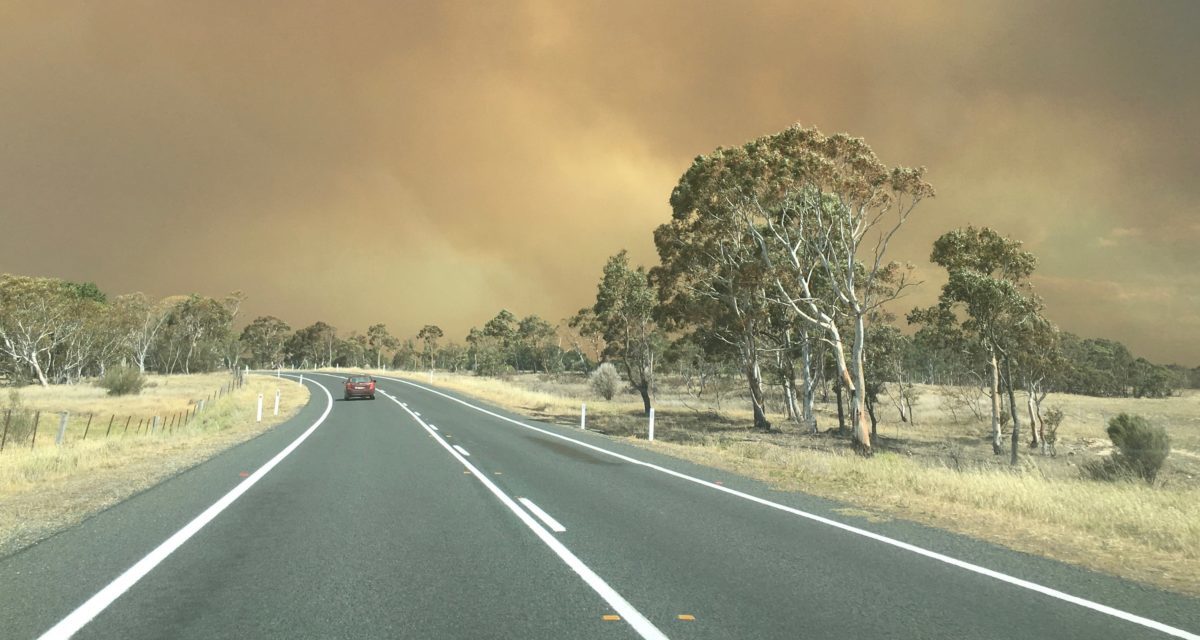From pv magazine Australia.
The haze and fallout from Australia’s catastrophic bushfires is also affecting the output of panels in solar farm and rooftop installations – part of a renewables infrastructure which on clear, sunny summer days can supply as much as half of the energy demand of the National Electricity Market (NEM).
The haze has so far been recorded as reducing solar output from residential rooftops by up to 45% in particular locations on certain days.
Solar Analytics, a smart-monitoring company that helps rooftop solar owners manage energy consumption and generation, monitors 35,000 sites in Australia. It has correlated Air Quality Index readings in recent months with expected irradiance and solar panel output – with discouraging results.
On December 10, one of the worst smoke-haze days in Sydney, the median energy generated across 2,200 sites in the city was 22.7 kWh; compared with 26.6 kWh on clear days in the first two weeks of December.
A particulate problem
That 15% decrease was surpassed on December 21 – a cloud-free but badly smoke-affected day – when Sydney rooftops showed a 27% fall in output, compared to a clear December day a year earlier.
New Year’s Day in Canberra had the unhappy distinction of choking on a particulate matter (PM 2.5) reading of 347 micrograms/cubic metre (μg/m³), when a normal December or January day might register 3-10μg/m³. Solar Analytics recorded a 45% associated decrease in the city’s rooftop solar output.
Professor Gary Rosengarten of the School of Engineering at the Royal Melbourne Institute of Technology, said the decrease was caused by light being absorbed, scattered or reflected by particulate matter in the haze. He told pv magazine: “There’s not enough direct light to cast a sharp shadow. That also decreases the amount of light hitting directly on the PV panel.”
Victor Depoorter, technical director at solar forecasting company Proa Analytics said on certain days his company observed smoke haze affecting all the large scale solar projects it monitors, from the Kidston Solar project in Far North Queensland to the Tailem Bend Solar Power Project in South Australia.
Utility scale hit
In the areas most affected, he said, “we could see solar farm output reduced by 10-15%”.
Popular content
Depoorter told pv magazine: “It has been challenging to distinguish between clouds and clear sky on some days at some of our sites.” That is an issue, he said, because the behaviour of irradiance is not the same in haze or cloud cover.
“Water-carrying clouds – the big, fluffy white clouds which are the most common here in Australia – have a very high reflection,” he said. “They can almost completely block irradiance. That’s not the same case for smoke haze. The scattering mechanisms work differently.”
The forecasting technology developed by Depoorter and Matthew Jeppesen, managing director of Proa Analytics, enables the Kidston and Tailem Bend solar farms to forecast output into the NEM, ensuring the Australian Energy Market Operator can better integrate energy flows with those of other generators on the grid. Proa Analytics is working towards achieving the same accreditation for other solar farms in the NEM.
So far, said Depoorter, the variations introduced by smoke haze have not been sufficient or frequent enough for the company to consider training its algorithms to definitively distinguish smoke haze from cloud.
He hopes that will never become necessary.
Muddying output
Smoke haze also settles as dust in affected areas, a feature Depoorter says can reduce solar panel output long after the air has cleared.
If dust and ash mix with water from otherwise-welcome rain, the result can be a film or patches of mud which will also reduce panel efficiency.
When cars appear dirty from combined dust and rain, Depoorter said, solar installations are likely to be equally affected and require cleaning to restore optimal output.
“Unless people are reactive in cleaning their solar panels after these events,” said Depoorter, “losses in output due to soiling will be increased for some time.”
This content is protected by copyright and may not be reused. If you want to cooperate with us and would like to reuse some of our content, please contact: editors@pv-magazine.com.



2 comments
By submitting this form you agree to pv magazine using your data for the purposes of publishing your comment.
Your personal data will only be disclosed or otherwise transmitted to third parties for the purposes of spam filtering or if this is necessary for technical maintenance of the website. Any other transfer to third parties will not take place unless this is justified on the basis of applicable data protection regulations or if pv magazine is legally obliged to do so.
You may revoke this consent at any time with effect for the future, in which case your personal data will be deleted immediately. Otherwise, your data will be deleted if pv magazine has processed your request or the purpose of data storage is fulfilled.
Further information on data privacy can be found in our Data Protection Policy.